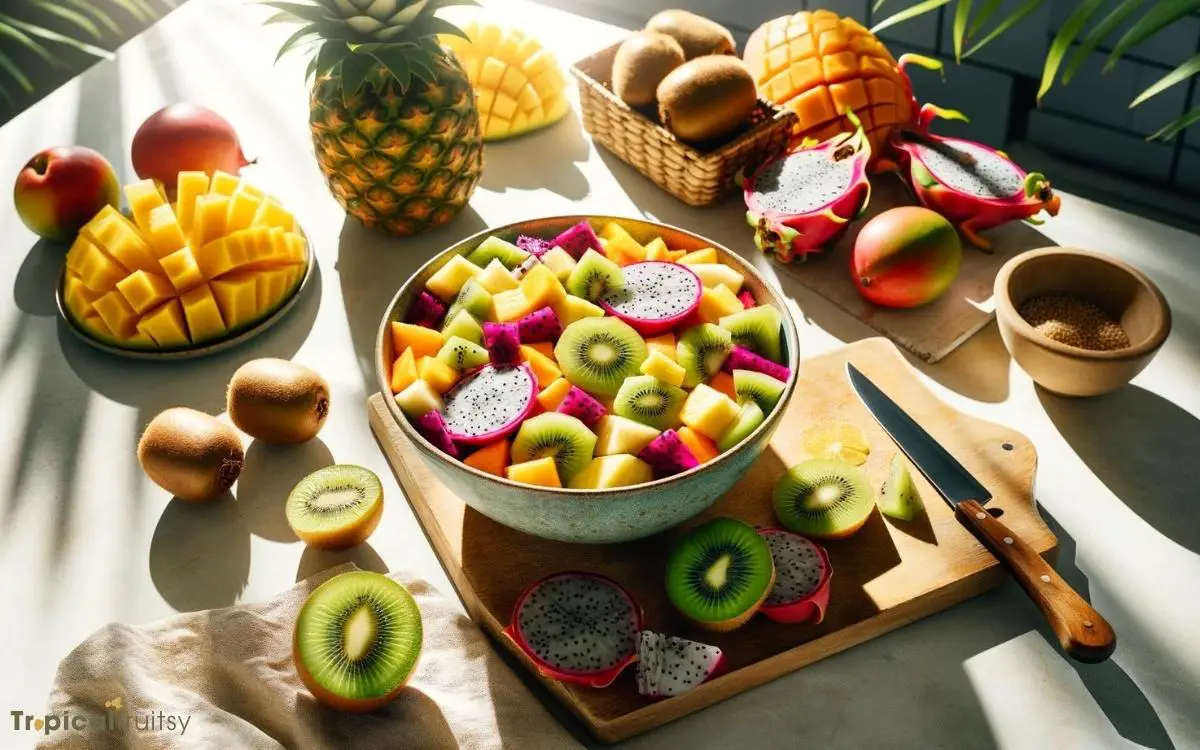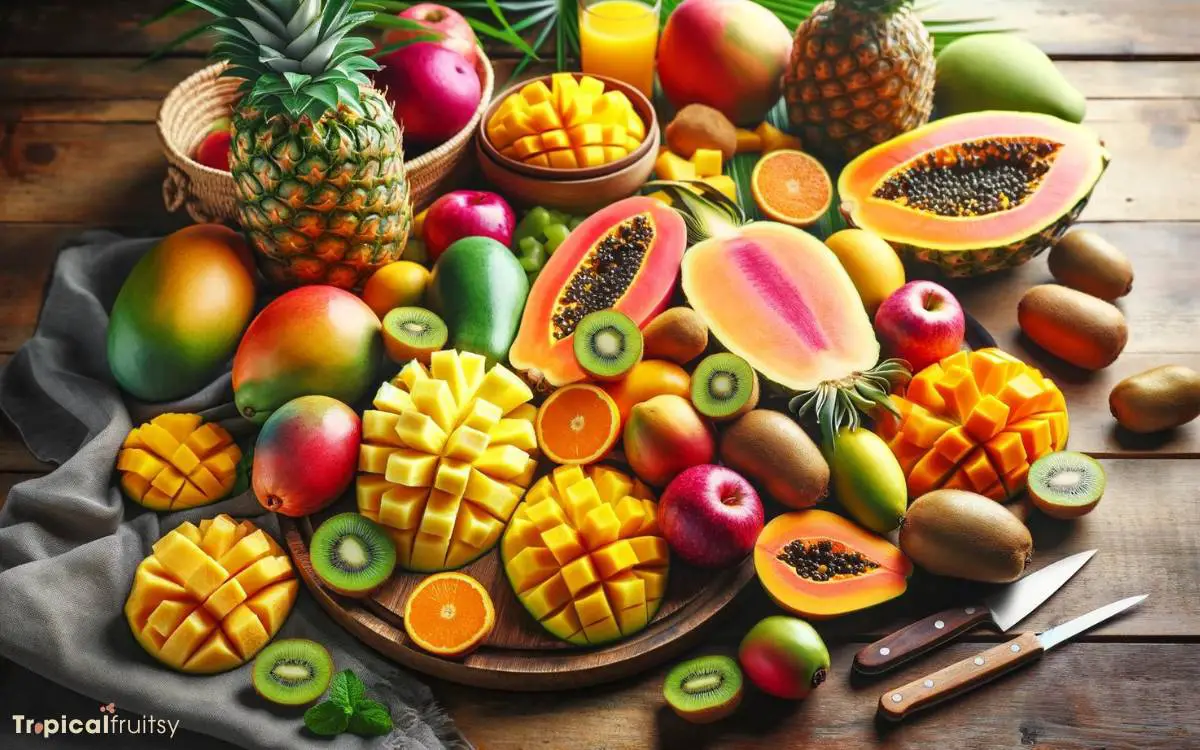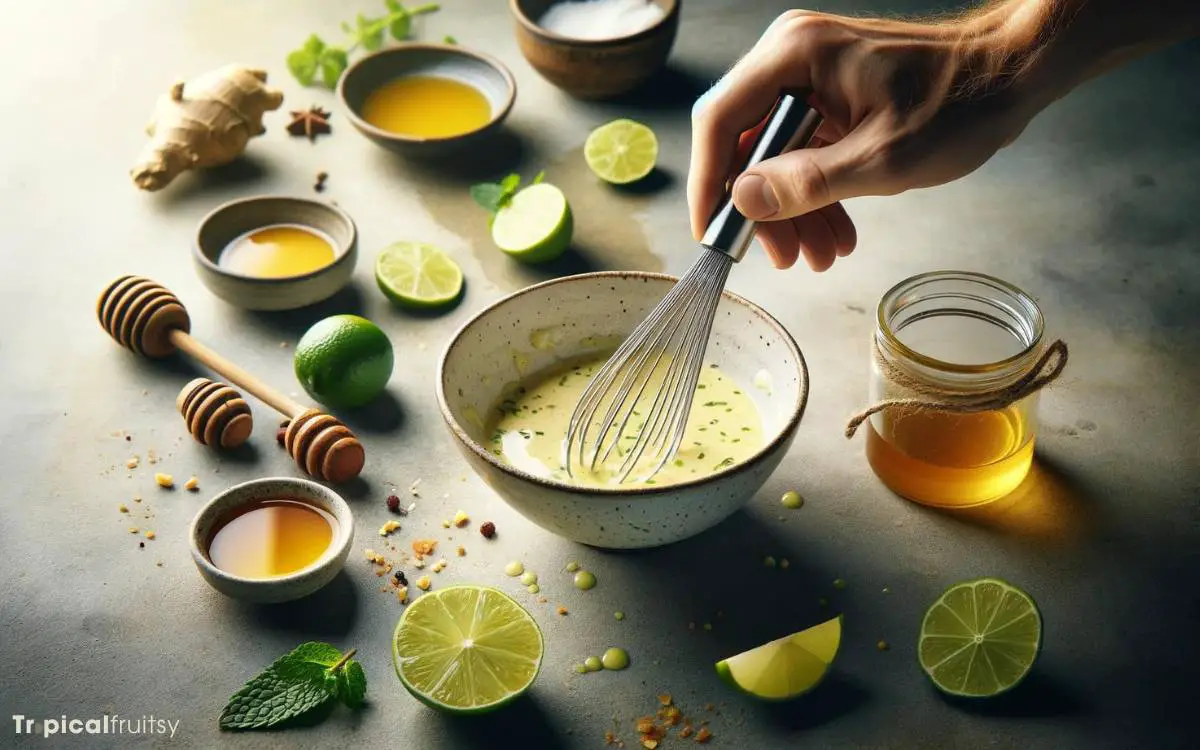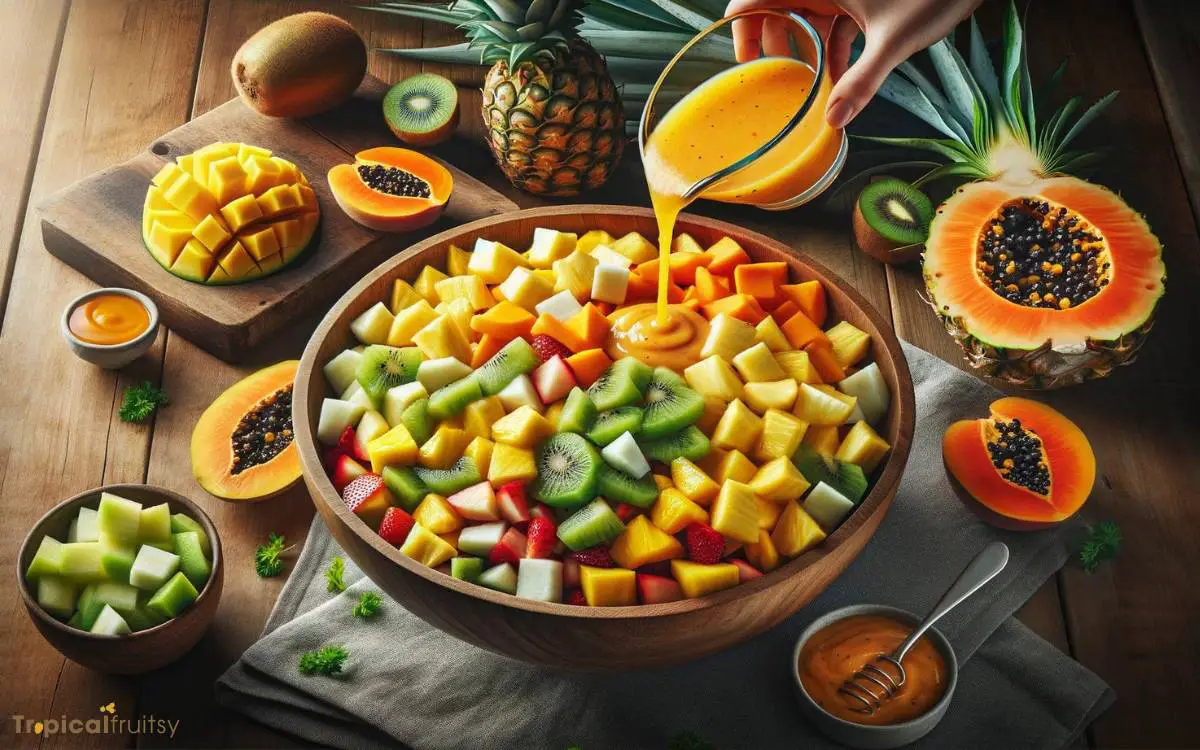How to Make Tropical Fruit Salad? 4 Easy Steps!
Creating a tropical fruit salad is an artful way to celebrate the vibrant flavors and colors of exotic fruits.
This culinary creation begins with the careful selection of ripe, succulent fruits that not only complement each other in taste but also in texture.
Mangoes, pineapples, kiwis, and papayas are among the popular choices, promising a refreshing medley.
The preparation process involves meticulous washing, peeling, and slicing to ensure uniformity and aesthetic appeal.
A well-crafted dressing, often a light citrus-based concoction, can enhance the natural sweetness of the fruits without overpowering them.
Assembling the salad requires a gentle hand to maintain the integrity of the delicate fruit pieces. Finally, considerate tips on serving and storage are crucial to preserve the freshness and to present the salad at its most flavorful state.
The following steps will guide you through the process of creating a delightful tropical fruit salad that is both visually and gastronomically pleasing.

Key Takeaway
Step 1: Selecting Your Fruits

Selecting the right assortment of fresh, ripe tropical fruits is the cornerstone of creating a vibrant and flavorful tropical fruit salad. A discerning selection process is paramount, focusing on the quality and ripeness of each fruit.
Pineapples should exhibit a golden hue and exude a sweet aroma at the base, indicating maturity. Mangoes demand a gentle squeeze; a slight give suggests the perfect ripeness.
Papayas with vibrant, partially yellow skins promise a juicy, buttery flesh within. Kiwis should be firm yet responsive to pressure, revealing a balance of tartness and sweetness.
Passion fruits are at their peak when the skin is slightly wrinkled, housing a tangy, aromatic seed pulp.
Step 2: Preparing the Ingredients

Once the fruits are selected, one must wash, peel, and cut them into bite-sized pieces, ensuring they are ready for the salad assembly.
Begin by thoroughly rinsing the fruits under cold running water to remove any pesticides or residues.
For fruits with inedible peels, like mangoes and kiwis, use a sharp paring knife to remove the skin with minimal waste. Slice the flesh away from any pits or seeds.
Fruits such as pineapples and papayas require coring before the flesh can be diced into uniform cubes, promoting an even distribution of flavors.
With each ingredient prepared with precision, the overall integrity of your tropical fruit salad is preserved, ensuring a harmonious blend of textures and tastes for an exquisite culinary experience.
Step 3: Crafting the Perfect Dressing

A tropical fruit salad’s allure is significantly enhanced by a well-crafted dressing that complements the vibrant flavors of the fruits.
The key to a perfect dressing lies in balancing sweetness, acidity, and a touch of zest, which ties the various fruit profiles together harmoniously. A dressing should not overpower the fruits but rather elevate their natural tastes.
Here is a table showcasing a simple yet innovative recipe for a tropical fruit salad dressing:
| Ingredient | Quantity | Purpose |
|---|---|---|
| Fresh Lime Juice | 1/4 cup | Adds brightness and acidity |
| Honey | 2 tablespoons | Provides natural sweetness and smooth texture |
| Mint Leaves | 1/4 cup | Introduces a refreshing, aromatic element |
| Ginger (grated) | 1 teaspoon | Offers a warm, spicy undertone |
Whisk these ingredients together until well combined and drizzle over the prepared fruit just before serving to maintain the salad’s fresh appeal.
Step 4: Assembling the Salad

To assemble the tropical fruit salad, begin by preparing a variety of ripe fruits such as mangoes, pineapples, and kiwi.
Ensure that each fruit is peeled and cut into uniform pieces to promote an even distribution of flavors and a pleasant aesthetic.
- Gently Combine the Fruits: In a large bowl, carefully mix the prepared fruits to avoid bruising. The aim is to achieve a vibrant mélange that is as delightful to look at as it is to taste.
- Incorporate the Dressing: Drizzle the previously crafted dressing over the fruit mixture. Fold it in delicately to coat the fruit without mashing them.
- Chill Before Serving: Allow the salad to refrigerate for at least 30 minutes, enabling the flavors to meld beautifully.
Moving forward, let’s explore essential serving and storage tips to maximize the enjoyment of your tropical fruit salad.
Can Tropical Fruits Grown in a Greenhouse Be Used in Making Tropical Fruit Salad?
Yes, tropical fruits grown in a greenhouse can be used in making tropical fruit salad. The growing tropical fruit greenhouse exploration allows for the cultivation of exotic fruits like pineapple, papaya, and mango all year round. These fresh, locally grown fruits can enhance the flavor and quality of a delicious tropical fruit salad.
Serving and Storage Tips
While the tropical fruit salad chills, consider the following tips to ensure it is served at its best and remains fresh if stored.
Presentation is paramount; serve the salad in a clear glass bowl to showcase the vibrant colors. If outdoors, keep it on ice to maintain its refreshing quality. For individual servings, consider coconut shells for a novel twist that underscores the tropical theme.
For storage, an airtight container is essential to preserve the salad’s integrity and prevent oxidation.
Refrigerate promptly and consume within two days for optimal freshness. Avoid freezing, as it can compromise the texture and flavor of the fruits.
Always stir gently before serving to redistribute the juices and ensure each portion is equally delightful.
Conclusion
A tropical fruit salad emerges as an exquisite symphony of flavors when diverse fruits are meticulously selected and prepared with precision.
The crafting of a sublime dressing is paramount, as it enhances the natural sweetness with a hint of zest.
The artful assembly of the salad creates a vibrant tapestry of colors and textures.
Proper serving and storage ensure the delicate harmony of ingredients remains intact, offering a refreshing indulgence that tantalizes the senses.






